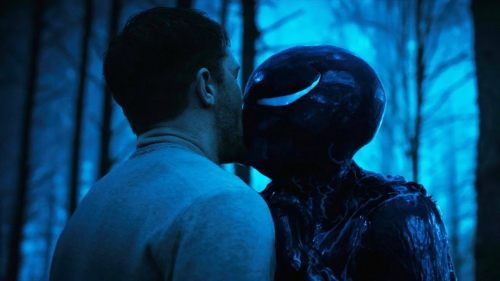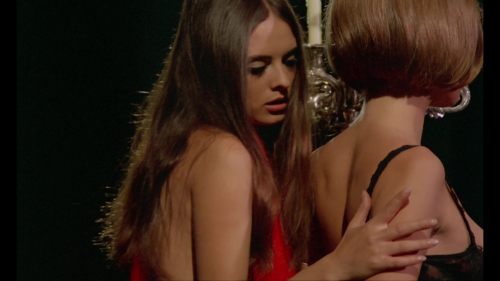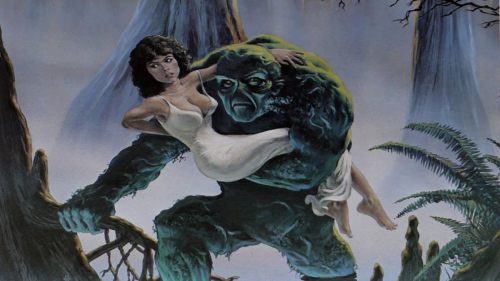Queer Underworld: WITCHBOARD (1986)
It’s a common adage that, in fiction, the monster is never just a monster. Horror, science fiction, and fantasy are the venues through which we explore ideas through metaphor and allegory, sometimes unintentionally through the lens of an audience who connects with a work’s themes in a manner specific to them. Such is the case with all manner of LGBTQ cinema, which has often relied on metaphor to smuggle queer themes into cinemas or been subject to queer interpretations after the fact. We at Birth.Movies.Death want to give those queer readings of genre films a voice. This is Queer Underworld.
Headcanon is a powerful force in queer consumption of mainstream media. Though it’s undeniable that progress has been made in terms of LGBTQ representation in the past few decades – torturously slow and flawed progress, but progress nonetheless – there are still plenty of instances where queer folks have been able to read same-sex attraction into narratives that weren’t otherwise explicit about it, adding an entirely new dimension to a work that may debatably have never had the intention of representing the queer community at all. Witchboard is one of these films. On the surface, it’s as heteronormative as romantic conflicts get. But just below the surface, there’s an entirely different sort of love story, one which queer horror fans have clung to as one of the rare instances of mutual male attraction found in genre films of the 1980s.
Witchboard tells the story of two men and the woman they were both romantically involved with. Jim (Todd Allen) and Brandon (Stephen Nichols) were at one time best friends, having grown up together in the same house and reportedly having had a bond closer than brothers, but that relationship was shattered when Jim started dating Linda (Tawny Kitaen), whom Brandon apparently feels was stolen away from him. Setting aside the ludicrous notion that any woman can be “stolen away from” one relationship into another, this rift informs the start of the film when Linda, still friends with Brandon, invites him over for a party and Brandon brings along his Ouija board to show off his connection with a ghost child. After the summoning ends with an angry ghost and some paranormal mischief, Brandon accidentally leaves the Ouija board with Linda and Jim. Linda, against Brandon’s warning, uses the board alone and continues contact with what she believes to be the ghost child. Instead, it seems that a force beyond her understanding and control might be about to possess more than the board’s planchette.
In the broad strokes, it’s easy to see what the templates of the characters’ arcs are going to be, at least insomuch as Linda is mostly just a narrative prop to incite Jim and Brandon into cooperating to investigate her possession. Brandon needs to let go of his attraction to Linda in order to reconnect with his best friend, and Jim needs to reciprocate by opening himself up to the friend who knows him better than he is otherwise comfortable with. Textually, this is the message Witchboard wants to convey to a general audience, but there’s a ton of evidence to back up a reading that Jim and Brandon are not actually fighting over a mutual affection for Linda. Particularly when you consider how Linda plays a distant third place in terms of character depth and development, it seems particularly plausible that Jim and Brandon are upset because they are attracted to one another and have no way to express it.
The fact of the matter is that Jim is threatened by how Brandon can cut right to the heart of his emotions as a result of how long and close their relationship has been. Brandon is the one who tells Linda that Jim has never been able to cry for anyone, even those who have died and been close to him, which seems like an intimate detail for Brandon to know and for Linda not to. Brandon’s and Jim’s fights are vicious not because they are both expressing a competing desire for the same person, but because they know each other so well that they can attack one another in the rawest form possible. But as they are forced together to work out the problem of Linda’s possession, you can see a chemistry surface between them, a relaxed comradery that shows what they were like before Jim’s relationship with Linda wedged them apart.
What’s particularly telling is a scene where the men share a hotel room as they travel to hunt down the origins of the spirit trying to overtake Linda’s consciousness. In this scene, Brandon confesses that he knows Jim didn’t “steal” Linda, but when Jim accuses Brandon of still being in love with her, Brandon stays enigmatically silent. Jim, meanwhile, has shown numerous instances of keeping Linda at an emotional distance by this point, expressing more joy at the prospect of potentially being the father of Linda’s child than being in a relationship with Linda in the first place. This scene shows him confessing to Brandon that he isn’t actually in love with Linda, and that he’s unsure that he has the ability to love anyone. The textually intended purpose of this exchange is clearly to set up that reconnecting with his oldest friend will allow Jim to remove any doubt from his mind that he loves Linda, since he is actually capable of the kind of love necessary for deep friendship, but this is a rather circuitous route for the narrative to take when Linda doesn’t have much narrative agency by this point in the story. A much easier reading of this relationship reveals that Brandon isn’t jealous that Jim is with Linda, but rather that Jim is not with Brandon, that Jim’s emotional insecurity prevents him from acknowledging a mutual attraction between the two men.
What clinches this reading is the scene of Brandon’s death, where the evil spirit of the board murders Brandon with a hatchet. Upon waking from unconsciousness and finding Brandon’s body, Jim does what we have been told is unthinkable: he cries. It’s an unprecedented level of emotional outburst from Jim, and it is never replicated, not even in the final showdown where Linda is entirely possessed and Jim thinks he may have to kill her. To me, this makes the eventual epilogue wedding of Linda and Jim ring a little hollow, like a consolation prize, since theirs wasn’t the relationship that grew and flourished through Jim’s emotional growth. Brandon, with unspoken words, knowing looks, and singular knowledge of Jim’s emotional core, has a much more developed onscreen relationship with Jim that the film skirts exploring in favor of cinematic convention.
I honestly couldn’t tell you whether the queer-coding in Witchboard is intentional or not. I admit that I’ll often search for queer themes in places where they aren’t necessarily at the forefront of the filmmakers’ minds, but here the romantic tension feels more heavily hinted at than in other films where I’ve shipped characters who aren’t explicitly linked. But in the end, the intent doesn’t really matter. Because I and many other queer viewers accept that chemistry as our personal canon, it allows us to connect with the film in a way that is unique to us, in a cinematic landscape starved of content specifically for us. Even if you disagree with this reading of the film, the power headcanon holds for the queer community in consuming cinema cannot be denied.
Besides, Zarabeth (Kathleen Wilhoite), the medium who dominates Witchboard’s second act, is a queer icon and none of you get to tell me otherwise.




